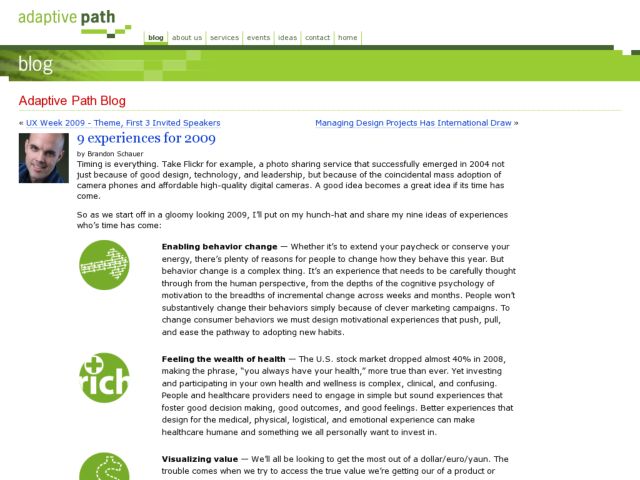Tog's comparison and analysis of the human computer interaction versus the user experience with both the Amazon Kindle and the iPhone/iPod Touch is excellent. The separation of HCI/UX in his analysis really drives the point home that good interaction and industrial design can make the experience, and a good experience isn't only about the design.
I don't use a Kindle daily, so I can't comment personally on it, but the industrial design was a showstopper for me and kept me from wanting it. Truth be told, though, the kind of books I read are probably better on dead trees. The thing that impressed me most was the mobile connectivity and the screen. But when I held it in my hand and paged through, the buttons kept me paging through accidentally. I think the lack of back light for darkened rooms would also be a let down.
As for the iPhone, I'm not one of those people that dotes on it. Don't get me wrong. It's without a doubt the single most enjoyable device I use daily, and I wouldn't want to be without it. But many of the elements of the experience have frustrated me, and I still won't be convinced that typing on a touchscreen is a step forward from a physical keyboard. The Sidekick spoiled me.
The best part of this article is that step back that tells the story of why we need to take a holistic approach to the product, from the interaction with the interface to every aspect that radiates from the product.
Companies that pay attention to both the mechanics of the interface and the subtleties of the user experience win. Explore websites like Bed, Bath & Beyond and see how good screen design and carefully-plotted user experience come together. Don’t just examine look and feel; set up a shopping scenario and experience every step from thinking about maybe buying a product to selecting it and checking out. Bed, Bath & Beyond has perfected a superior experience in their real-world stores, and they have translated it beautifully into the cyber world.
There are no trade-offs here. Human/machine interaction is a subset of the user experience. Anything done to improve the mechanics of the interface will, by its very nature, improve the overall experience. Anything done to improve the user experience will amplify the good qualities of the human/machine interaction.
You must, however, research and design each of them separately—and to test each of them separately. They each require a specific frame of mind, and concentrating on just one will lead to the kind of uneven design that both the Kindle and the iPhone/iPod Touch have been offering.
And that last part strikes home most. These are separate activities, but require a holistic approach and frame of mind. Investing in research and design on both of them can be seen as either a luxury or a given depending on how and where you work. But the holistic approach ensures a better experience.
http://www.asktog.com/columns/074KindleVsiPhone.html
